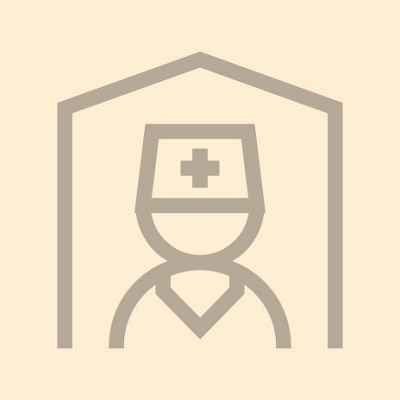Credit: Getty Images
When a young girl arrived at Mediclinic Pietermaritzburg in critical condition, doctors faced a complex and uncommon diagnosis of limbic encephalitis
What followed was a remarkable journey of intensive care, teamwork, and an almost miraculous early recovery.
A 12-year-old girl was recently treated for a rare illness at the Mediclinic Pietermaritzburg ICU. She had NMDA receptor autoimmune encephalitis, also called limbic encephalitis, where the immune system wrongly attacks the brain. After having seizures for 21 days and spending six weeks in ICU, she made an incredible recovery and left the hospital with no lasting brain damage.
Team effort aids recovery in paediatric immune-mediated limbic encephalitis case
Autoimmune encephalitis occurs when the body develops an autoimmune response to one of the neuroreceptors in the brain, explains Dr Doshen Naidoo, a paediatrician at Mediclinic Pietermaritzburg. The disease is extremely rare, especially in children, and it's also extremely rare to have a good outcome so early, he adds.
“That’s because it usually causes devastating epilepsy and is usually a neurological disaster. For example, this child had non-stop seizures for three weeks in the ICU and was on a ventilator. Generally when that happens, you go into a degenerative, possible brain death scenario. But she survived it and went home after six weeks – something nobody believed would happen.”
There are only 60 documented cases of the disease worldwide since 1968 in children under 12 years old, Dr Naidoo says. He highlights the importance of teamwork as the case involved multidisciplinary collaboration with a neurologist, neurology technicians, renal physician, intensive care team, physiotherapists, occupational therapists, speech therapists, and surgeons. “It was a mammoth task,” he says, “but the outcome was phenomenal”.
Diagnosing paediatric immune-mediated limbic encephalitis
Dr Naidoo says the patient first presented with signs of aggression and hallucinations, so doctors initially thought it was a psychiatric condition. She had also started having seizures two months earlier and was being treated for epilepsy by another paediatrician. “We admitted her for possible frontal lobe seizures, but from admission, she went on to have continuous epileptic seizures.
“We used five different anticonvulsive agents, but none of them were stopping the seizures. After 48 hours, we had to ventilate her to use anaesthetic drugs to try and stop the seizures, but it didn't work. She had fits for 21 days while on the anaesthetics.”
Doctors confirmed she had autoimmune encephalitis after a test showed she had the NMDA receptor antibody, which is linked to the disease. Since the team had never seen this condition in such a young child before, they had to act quickly, using limited international research and advice from local neurologists to guide their treatment plan.
Challenges in treating paediatric immune-mediated limbic encephalitis
“Since some of the medications were off-label, in other words, not originally approved for the treatment of paediatric immune-related limbic encephalitis in South Africa, it was also difficult to get medical aid authorisation for them,” says Dr Naidoo. For example, rituximab, the biological needed to treat the condition, was only authorised after one month.
While waiting for more answers, the team used different medications, including Polygam (used off-label), to try and block the harmful antibody. But her seizures didn’t stop, so they motivated for her to have 10 rounds of dialysis. Dr Naidoo largely attributes her recovery to the dialysis. “The circulating antibody is in the bloodstream attacking the brain cells, so the dialysis basically filters out the antibody while the medicine is dulling the response,” he explains. “It’s a combination of the two.”
Because the patient was so sick and her seizures kept coming, along with serious side-effects like a drug-resistant infection and sepsis, the team could only do dialysis every two or three days. She was on a ventilator for almost two weeks, so she also needed a tracheostomy and a feeding tube. “Eventually after 21 days, and seven cycles of dialysis, she stopped fitting and we were then able to wean down the ventilator, ultimately getting her off the machine,” says Dr Naidoo.
Amazingly quick recovery
Doctors were amazed when, right after coming off the ventilator, the patient started talking, eating, and even drawing. Given her constant seizures and all the medication she’d been on, some brain damage was expected. But within a week, she was back home and fully functional.
Worldwide, fewer than 10 cases like her – with no lasting brain effects – have been reported. Most patients only start to recover fully between six months and two years, so her full recovery in just six weeks was far from normal.
Going forward, she’ll need monthly blood tests and EEG tests to monitor seizures, and she must take rituximab – now approved by the medical aid – for at least six months. She will need to stay on anti-seizure medication and won’t be able to go back to school this year, as rituximab weakens the immune system and she can’t risk getting an infection.
“From the few international cases that are reported, most have semi-permanent brain damage and there is said to be an 80% recovery within 36 months for 90% of patients. Some never recover fully, says Dr Naidoo.
There’s a 50% chance the condition could come back because it’s linked to a receptor antibody, so regular check-ups and treatment are very important. Dr Naidoo says this case shows that South Africa’s medical experts are just as skilled as those anywhere in the world. They’ve set a new standard for what’s possible.
“For the next child, treatment and medical aid authorisation will be easier because they can reference this case.”
The Mediclinic team did an excellent job, adds Dr Naidoo. “It’s encouraging to see what can be achieved when the focus is on the patient and everyone goes the extra mile.”
Further publications on the topic
Doctors 1


